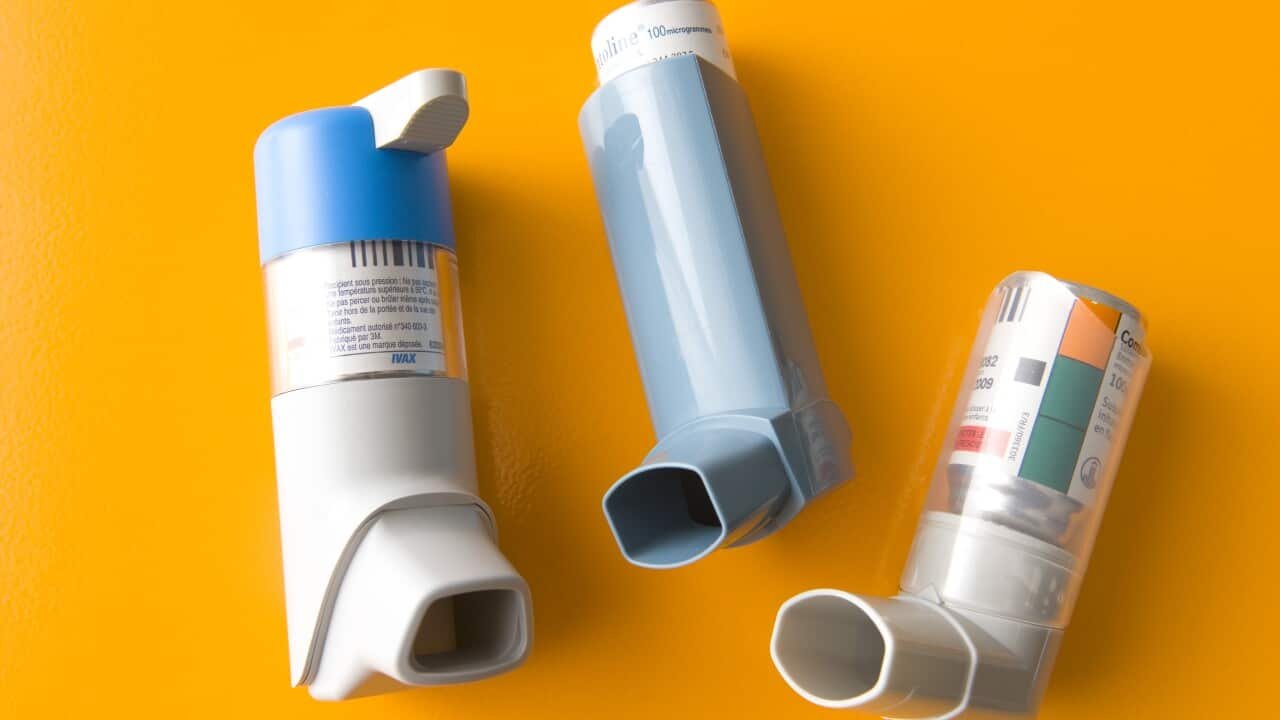Inside many traditional asthma inhalers is a man-made compound considered so bad for the environment that governments around the world are scrambling to phase it out.
It’s not just found in puffers, but also inside many fridges and air-conditioners.
If you cast your mind back to the 1990s and early 2000s, you might remember the term: CFCs or chlorofluorocarbons – they were the nasty chemicals putting a big hole in the ozone layer.
CFCs are now outlawed in 197 countries and in many instances CFCs were replaced with HFCs, or hydrofluorocarbons.
In an asthma inhaler, the HFCs are found in the aerosol part that helps propel the medication into a person’s lungs.
Problem is, we now know HFCs are also not so good for the environment either, punching well above their weight when it comes to warming the planet.
Dr Daniel Duke is a senior lecturer in the Department of Mechanical and Aerospace Engineering at Monash University in Melbourne and he is working to find a replacement for HFCs inside inhalers.
“It's a really potent greenhouse gas. So one kilogram of the propellant chemical in an asthma puffer is the equivalent of releasing over 1400 kilograms of carbon dioxide into the atmosphere,” Dr Duke says.
To put that into perspective, he says using your asthma puffer a couple of times a day for a year has the equivalent warming effect as driving your car from Melbourne to Townsville and back again.
Around one in 10 people in Australia have asthma, so that’s 2.7 million people taking a very long road trip.
But don’t go ditching your inhaler just yet.
Conjoint Professor Peter Wark from the University of Newcastle says asthma inhalers are vitally important for everybody with asthma.
“The majority of people, certainly those over the age of 12, should be using a regular inhaler as a preventer if they have asthma. There's no doubt about that. So these are really the cornerstone of treatment,” Professor Wark says.
Greener alternatives for asthmatics
The good news is there are already some alternatives on the market that are more environmentally friendly.
Dr Danielle McMullen is the president of the Australian Medical Association’s NSW Branch and she says people should speak to their doctor to see what options might be suitable for them.
“We do have a number of dry powder inhaler devices that come in different shapes and sizes. And of course, it's really important to get advice on how exactly to use the device you've been given, particularly for people using those combination medications,” Dr McMullen says.
Getting advice is essential because dry powder inhalers won’t work for everyone.
Kids, older people and those suffering an asthma attack will find it difficult to try to inhale the medication without a propellant helping things along, as Dr McMullen explains:
“I think there's likely to always be a need for some propellant inhaler devices. For people having an acute asthma attack, the easiest way to get those higher doses of medication into the lungs is using a puffer and a spacer.”
This takes us back to the conundrum of HFCs. Dr Duke says it’s a challenging problem he’s determined to solve.
“One of the things that makes this really challenging for both a science perspective and from the perspective of the pharmaceutical companies, is that there is no one replacement that's suitable for all different applications,” Dr Duke says.
“So if you go and have a look at your can of spray oil in your kitchen, it'll say propellent: propane or butane - those are hydrocarbons, they're flammable and you would not want to inhale one of those.
“When it comes to medical inhalers, we need something new and unique that meets all these different requirements.”
There’s an added complication – not just ensuring the new compound is safe for consumption – but also considering how any propellant will interact with the medications inside the inhaler.
The future for asthmatics
Dr Duke says his team are hopeful they will find a suitable replacement for HFC’s inside asthma inhalers but there are still years of testing needed before any potential new inhaler will reach the shelves.
“We’re hopeful that we'll start to see change within five years, although it may take about 10 years for the product to reach pharmacy shelves around the world because of all the approvals that need to be obtained,” he says.
“The pharmaceutical industry, many of the big companies have already made public announcements about their intention to phase out the use of some of these chemicals.”
Until then, even as HFCs are being phased out across the world, asthmatics can rest assured there will always be an exemption for medical use until a suitable alternative is found for the traditional metered-dose asthma inhaler.




